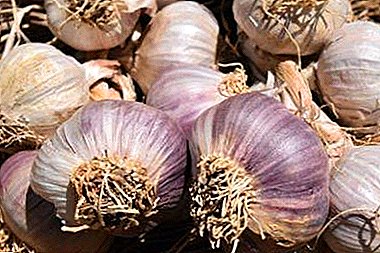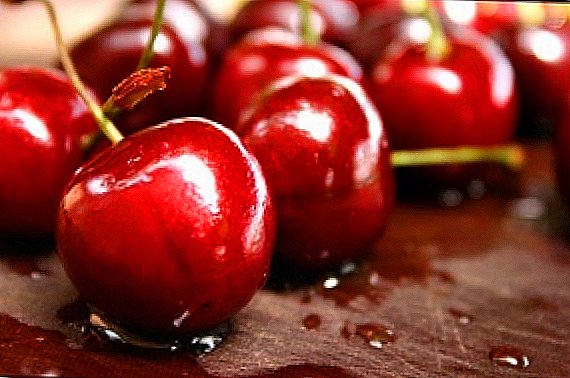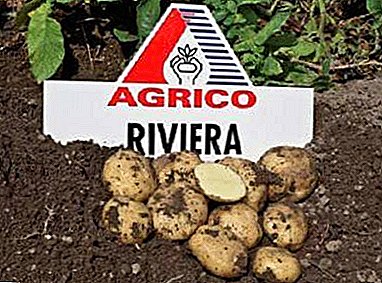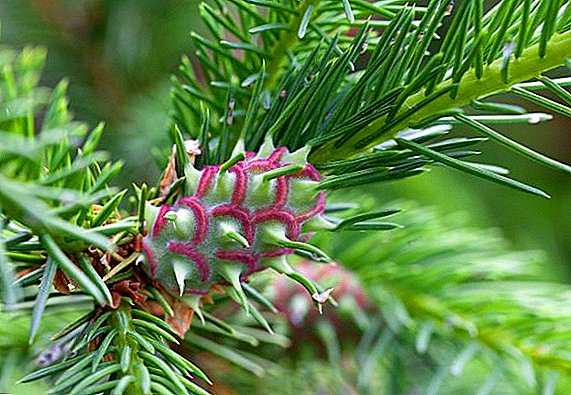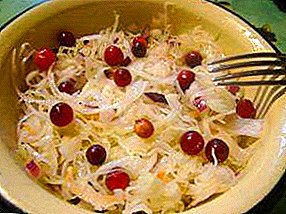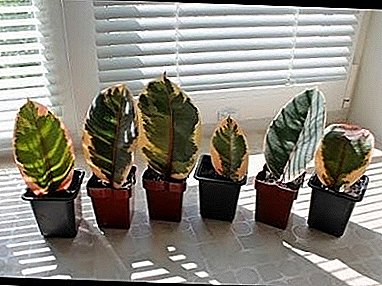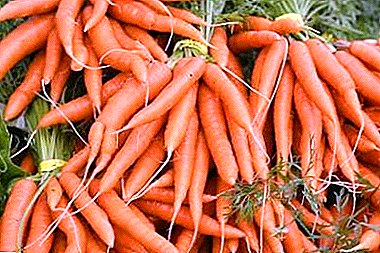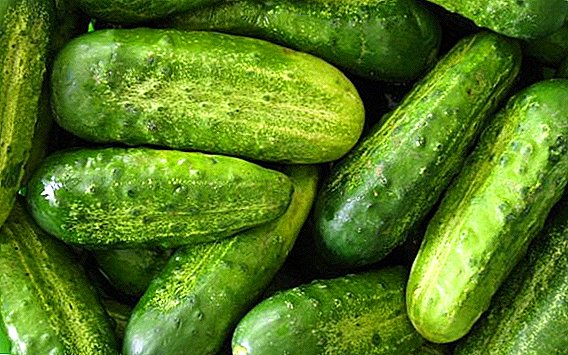 Among the many varietal cucumbers for open ground, which are fallen in love with gardeners, cucumbers varieties "Aquarius F1" also occupy not the last place. This is explained by the fact that these cucumbers are early ripe and high-yielding. In this article, we present a description of the hybrid, as well as tell you how to plant and grow it in order to collect a decent harvest.
Among the many varietal cucumbers for open ground, which are fallen in love with gardeners, cucumbers varieties "Aquarius F1" also occupy not the last place. This is explained by the fact that these cucumbers are early ripe and high-yielding. In this article, we present a description of the hybrid, as well as tell you how to plant and grow it in order to collect a decent harvest.
Variety description
Variety of cucumbers "Aquarius" is an early maturing, bee pollinating and high-yielding. Designed for open ground, but can be grown in greenhouses. Suitable for planting seedlings and seeds.  Cucumber plant of this variety is as follows:
Cucumber plant of this variety is as follows:
- The bush is average, with 2-4 lashes of the first order.
- Main lashes reach a length of 60-100 cm.
- Leaves are green, pentagonal, mid-dissected, with non-reaching lobes at the base.
- Type of flowering - mixed.
- The ovaries are solitary, oval, strongly ugly, with dense pubescence of white and brown color.
Did you know? In the botanical classification, cucumbers are considered fruits and are considered as false berries.The main advantage of “Aquarius” in front of other cucumber varieties is its longer fruiting - 1-2 weeks longer than others. There are also other recognized advantages of the presented variety:
- early maturity;
- high yielding;
- friendly fruit formation;
- fruits without bitterness even during the dry season;
- the shape and length of cucumbers are optimal for preservation;
- cucumbers with excellent taste, suitable for use fresh and for pickling;
- good resistance to certain diseases and pests;
- high marketability of fruits.
The most fruitful cucumber varieties are Herman, Phoenix Plus, Siberian Garland, Hector, Crispin, Taganai, True Colonel, Masha, Zozulya and Kurazh.
Let's name some possible disadvantages of the variety:
- culture does not like a lack of light;
- heat-loving variety, does not tolerate low positive temperatures;
- pollination depends on the presence of insects;
- seeds will not yield, because the hybrid variety;
- demanding of soil composition.

Fruit characteristics and yield
Features of the fruits of this hybrid:
- Cucumbers are early ripe, from 12 to 14 centimeters in length, 4-4.5 cm in diameter.
- The surface is tuberculate, smooth at the base.
- Technical maturity occurs on the 45-50th day from the moment the sprouts appear.
- Cucumbers are not bitter, fragrant, sweet and juicy.
- Fruits are green, do not turn yellow.
- The weight of each fruit is from 100 to 120 grams.
- Good yield - 2.5-3.0 kg per 1 square. m
Important! As well as seedlings of all cucumber varieties, cucumber seedlings "Aquarius" negatively relates to transplantation. At the slightest damage to the roots of the collection of fruits can not wait. Therefore, the movement of seedlings in the open ground should be treated very carefully.
Selection of seedlings
The choice of cucumber seedlings should be approached very carefully, because further harvest will depend on this. Therefore, acquiring seedlings, it is important to pay attention to the following points:
- Sold seedlings should be in separate containers, from which you can easily move them to a permanent habitat in the open field.
- Best for the acquisition of suitable seedlings of monthly age.
- Allowable plant height - 20-30 cm.
- The distance from the root collar to the cotyledons is no more than 5 cm.
- The barrel should be strong enough, not thinned, about 1 cm thick.
- Number of leaves - 5-6 pcs.
- The leaves and stem are dark green.
- The root should occupy the entire capacity.
- Earthy lump should not exude a rotten smell.

Soil and fertilizer
For cucumbers suitable fertile, loose, breathable soil, with optimum acidity pH 6.5:
- sandstone,
- light or medium loam,
- chernozem.
Soils not suitable for planting cucumbers:
- sour;
- sod-podzolic;
- others, heavy in composition and infertile.
Acceptable precursors can have a good effect on the growth of cucumber culture:
- early potatoes
- leek,
- tomatoes,
- cauliflower,
- early white cabbage
- pepper,
- peas (green peas),
- green crops
- eggplants,
- cereals - corn, buckwheat, oats, alfalfa.
 It is unacceptable to plant a crop in the same place two years in a row. It is better to withstand a gap of 3-4 years. Also some garden and other melon crops are not suitable as precursors:
It is unacceptable to plant a crop in the same place two years in a row. It is better to withstand a gap of 3-4 years. Also some garden and other melon crops are not suitable as precursors:- late beet,
- carrot,
- beans,
- late cabbage
- melon,
- watermelon,
- courgettes,
- pumpkin,
- squash
Even if the soil in its composition is ideal for the cultivation of cucumbers, before planting seedlings it still needs to be prepared:
- Introduce 10-15 kilograms of cow manure per square meter.
- Fertilizer mixture application will also be useful: 20 g of potassium sulfate + 20 g of urea + 30 g of superphosphate.
- If the soil on your site is more acidic than acceptable, then the situation can be saved by liming, which is carried out under the green manure (cabbage, green herbs).
Did you know? In the city of Nezhin stands a monument to cucumber Novonezhinsky varieties. Catherine II, who ruled Russia in the middle of the 14th century and once traveled through Ukraine, enjoyed the excellent taste of a barrel pickle of this variety. The Empress issued a decree that obliged the producers of this pickle to deliver it regularly to the imperial table.
Growing conditions
As mentioned above, this variety of cucumbers is demanding of some growing conditions:
- Temperature. Seedlings can be planted on the bed from the end of May, when the threat of frost has passed, with a constant soil temperature above +13 degrees and air - above +15. At lower mercury levels, cucumbers will stop growing and start to hurt. For further normal growth and fruiting the most suitable temperature is from +20 to +25 degrees.
- Shine. The plants of this variety are light-requiring, therefore they need open areas with sufficient intake of sunlight.
- Humidity. A sufficient amount of moisture is one of the main conditions for growing this crop. In hot weather, cucumbers need abundant evening evening watering with warm water. At moderate temperatures, they can be watered 1 time in 5 days.
- Top dressing. During the whole growing season, plants need two or three timely feeding with complex water-soluble mineral fertilizer.
- Garter. In order to whip cucumber plants are not tangled with each other, as well as to save space on the site of the plant it is better to tie up to the trellis, sending the main stem horizontally.
- Further care Immediately after planting, the seedlings need to be covered with a film. Further, during the growing season, it is necessary to weed cucumbers and loosen the ground under them.

Growing from seed to seedlings at home
If you purchased the seeds of cucumber "Aquarius" in order to try to grow seedlings from them, then you need to know the next steps with this planting material.
We grow cucumbers in open ground, in a greenhouse, on a balcony, on a windowsill in winter, in buckets, in a barrel and in bags.
Seed preparation
Usually, seeds collected personally should be disinfected in a solution of potassium permanganate. But the planting material purchased in the store does not need this procedure, since the manufacturer let it go on sale already prepared. This also applies to the hybrid variety "Aquarius". But these seeds must be pre-sowed preparation, because it can accelerate seed germination, increase their resistance to adverse conditions and increase yields. 
It consists of the following three options, to choose from:
- Soak. Seeds need to be wrapped in a linen or cotton piece of cloth and placed in room temperature water for sticking. Water should only slightly cover the seeds so that air can reach them.
- Hardening Wet cloth with seeds should be placed in the refrigerator for 48 hours at a temperature of from 0 to +2 degrees. It is important to remember that germinated seeds should not be placed in the refrigerator. Also all this time, the cloth with seeds should be wet. After the allotted time, the seeds should be sown immediately. This process will increase the resistance of future plants to cold weather.
- Bubbling. To speed up germination and increase seed germination, they can be bubbled with an aquarium processor. To do this, it is placed in a jar of water, and then there is dipped the seeds in a gauze bag. The bubbling process should take up to 18 hours, after which the seeds should be sown immediately in a container or in the ground.
Content and location
After seed preparation, one of the methods described above needs to decide in which containers you can sow the seeds for seedlings and where to keep them until the seedlings are planted in open ground. To do this, you can use plastic or peat cups, which are placed on well-lit window sills or heated balconies and verandas.
Find out how many days cucumbers sprout.
Seed planting process
The technology of planting cucumber seeds at home:
- Capacities for planting seeds are filled with a soil mixture consisting of garden soil, sand and peat (all in equal parts).
- In each cup to a depth of 1.5-2 centimeters, 1 or 2 seeds are buried and watered with warm water.
- Put cups on a warm window-sill on the south or south-east side, or placed on the balcony.
- The deadline for sowing seeds in cups: the second half of April - the first half of May.

Did you know? Resourceful gardeners with the help of cucumbers invented a method of dealing with harmful insects: the cut cucumber is placed in an old aluminum container and placed in the garden. With its smell, cucumber juice, which reacts with aluminum, repels pests.
Care of seedlings
If you ensure the proper care of the cucumber sprouts, you can grow full-fledged seedlings, which in the future will be able to settle down on the garden without any problems. Here are some guidelines for the care of seedlings:
- It is desirable to provide future seedlings with additional lighting. To do this, you need to place fluorescent lamps near the cups so that the seedlings are illuminated with additional light for 10-12 hours a day.
- It is necessary to water the seedlings daily with warm separated water.
- The temperature of seedling maintenance: at night - within + 18 ... +22 degrees, in the daytime - + 22 ... +26 degrees.
- It is important to avoid drafts in the room where the seedlings are kept.
- Before planting seedlings on the beds, it needs to be hardened every day for 30 minutes in the open air at a temperature of +22 degrees. The place must be attached. Gradually, the residence time of the seedlings on the street can be increased.
- If you correctly follow all the steps listed, then 1 month after planting the seeds you will have full-fledged, strong seedlings of cucumbers with four or five leaves.

Transplanting seedlings to ground
Transfer of seedlings from cups to a garden bed is best done in the second half of May, when warm weather is already fully established, not only during the day, but also at night. Next - step-by-step landing scheme and its process:
- In prepared soil, make the holes 15 cm deep and the distance between each 50-60 cm.
- Carefully remove the plants from the cups and deepen in the wells, then cover with earth and pour with warm water.
- To tie the seedlings to the supports with the help of twine.
- Cover with foil.
Agrotechnics growing seeds in open ground
If you live in the southern region, then the seeds of cucumber can be sown immediately in open ground. 
Outdoor conditions
Land for planting cucumber seeds should be taken to a well-warmed and sunlit place. If there is no such place, then to protect future cucumber bushes from wind or draft you can use "backstage" of tall cold-resistant crops, for example, early potatoes or flowers, previously sown in early spring next to a bed of cucumbers.
Important! Regularly collecting the grown ovary cucumbers, you will encourage them to re-education.Prepared seeds can be embedded both in open ground and sown in the greenhouse. Consider some of the differences planting cucumber seeds in the open beds and in the greenhouse.
In the open ground:
- Seeds can be any early, bee-pollinated varieties.
- For seeds planted outdoors, the constant temperature of the soil should be at least 15-18 degrees Celsius.
- Due to the threat of morning frost, sheltering is required.
- Soil can be prepared both in the fall, and just before sowing seeds.
- Later ripening fruit than in the greenhouse.
 In the greenhouse:
In the greenhouse:
- Seeds come from parthenocarpic (without pollination) or self-pollinating cucumber varieties.
- Seeds are sown one month earlier than in open ground, and they are not afraid of low positive temperatures.
- Beds for sowing seeds need to cook more in the fall.
- Ripening cucumbers will occur much earlier.
The process of planting seeds in the ground
Depending on the weather, cucumber seeds can be sown from the second decade of May to mid-June. You can spend sowing several visits, which will make it possible not to lose all the plants from possible morning frosts, as well as extend the period of fruiting. Step-by-step process of planting seeds:
- To make a marking of beds with distance between them of 65-70 centimeters.
- Using hoes to make rows of the desired length and a depth of 5-7 centimeters.
- At a distance of 15-20 centimeters from each other to lay the seeds of cucumbers to a depth of 2-3 centimeters.
- Sprinkle with seeds and soil.
- Carefully carry out watering from a watering can with a spray.
- Cover with foil or straw blanket.
Watering
Watering cucumbers should be carried out regularly and moderately. Irrigation mode with different weather factors:
- Sprouting sprouts are watered 3-5 times a week, depending on the day and night air temperatures, as well as the degree of soil moisture.
- During rains or in cold weather, watering is reduced or temporarily suspended.
- Water for irrigation must be heated to plus 25-28 degrees.
- In the morning, the bushes can be watered on the leaves, and in the evening - at the root.
- Irrigation mode in different periods of growth of cucumber plants:
- before the formation of the first flowers the bushes are watered daily, at least one liter of water per bush;
- at the first ovaries and up to the peak of fruiting, cucumbers should be watered once every two to three days with at least 10 liters of water per 1 square meter;
- From August until the end of the season, watering should be reduced to once a week, using 5 liters of water per square meter.
We recommend reading about how to water cucumbers in the open field and in the greenhouse.

Important! To preserve the structure of the soil and to prevent damage to the roots and young shoots in the cucumber bushes, during their watering you must use a watering can with a sprayer, and not water them with a stream.
Soil loosening and weeding
The first time you need to break through the soil immediately after the seedlings emerge, and then do it every ten days. Cucumber roots are located very close to the soil surface, so loosening should be done carefully so as not to hook the roots. To do this, you can use the forks, drawing straight lines, without scrolling, between the beds with cucumbers, or pierce the soil with them in several places.
Also fit a special rake with small and frequent teeth. Usually, loosening of cucumbers is needed the next day after rains or watering, when the earth dries up and is taken with a crust. Weeding can be combined with loosening. Loosening can also be replaced by mulching.
Masking
In order to ensure normal development, to stimulate the growth of the central shoot and to improve the fruiting, it is necessary to stew cucumber plants. To do this, remove all lateral processes (stepchildren), formed in the nodes of the shoots, while leaving the resulting ovary. This procedure can be carried out only when the stepsons reach a size of 3-6 cm. This is done very carefully, without damaging the tender shoots and flowers. It is best to use scissors for this.
Find out what to do for the staving of cucumbers.
Pasying is necessary until mid-July. After that, you need to leave two appendages at the very bottom of the plant, so that at the end of the fruiting, new stalks may appear on the existing root on the old stem. This method will help to prolong the fruiting of a single bush. 
Garter
Tie cucumbers necessary for the proper development of the bush, because:
- Tied bushes have long rods, on which there are more flowers and a greater number of cucumbers are formed.
- With the defeat of a fungus or a virus, the bush throws healthy lashes upward, which prevents diseases from spreading.
- Tied cucumber bushes take up less space on the garden bed.
- Convenient to harvest.
Here are the main ones:
- Horizontal Stretched in several horizontal rows of twine between two pillars located along the edges of the beds. With this method, the plant stems are first tied to the bottom string, and then to the others, as the borage grows.

- Vertical. Between the two supports along the edges of the bed, the string or string is stretched, to which the length of the string is tied over the entire length and lowered to each cucumber bush.The lower end of the twine is tied around the base of the bush. In the process of growth, the vine will twist around the support and rise upwards.
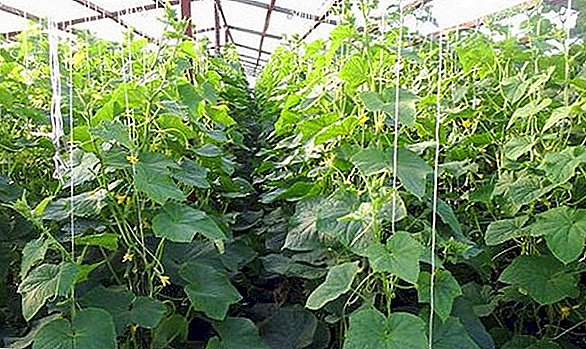
- Special mesh. It replaces both types of garter, described above, and allows the vines to be placed freely in the cells. The grid can be placed on any support: triangular, rectangular, to stretch between two pillars.

Important! Cucumbers should not be used by people who have diseases of the gallbladder and ducts.
Top dressing
The first feeding of cucumbers is carried out 21 days after the emergence of sprouts and then carried out once a week during the entire summer season. Top dressing consists of mineral and organic fertilizers. Here are a few options for such dressings (per 10-liter bucket of water):
- Dilute two capsules of "Energen" (growth stimulator). On 1 square. m consumes 3 liters of solution.
- Dissolve one tablespoon of the granules "Agricola №5 for cucumbers". Solution consumption - 4 liters per 1 square. m
- Two tablespoons of "Effecton-O". Consumes 4 liters per 1 square. m
- One tablespoon of nitrofoski + two tablespoons of "Agricola Vegeta". Consumption - 5 liters per 1 square. m
- Two or three tablespoons "Agricola-Aqua" for spraying. This drug is applied from yellowing leaves.

Pests, diseases and prevention
Variety of cucumbers "Aquarius" is considered resistant to the following diseases and viruses:
- fruit rot,
- olive and brown spots,
- bacteriosis
- peronospora,
- anthracnose,
- downy mildew.
Learn how to deal with false and ordinary powdery mildew.
Harvesting and storage
Harvesting a variety of cucumber "Aquarius" begins after 35-45 days after the first shoots. Fruits from creepers should be picked carefully so as not to damage the stem of the plant. It is best to cut them with a knife or scissors, leaving the cutting. Regularity is the main rule of picking cucumbers, so fruits should be harvested every other day, preferably in the morning or in the evening. The size of the collected fruit depends on their purpose:
- Fresh cucumbers up to 12 centimeters are suitable for fresh salad.
- Fruits up to 10 centimeters are suitable for canning.
- For canned salads - up to 4 centimeters.
Important! Cucumbers with black bumps are best suited for canning. Fruits with white bumps will taste better in fresh salads.It is important to remember that in order to prepare, maintain a good presentation and transport, cucumbers must be properly stored.

There are certain requirements for this:
- Fruits are not washed before storage.
- Acceptable storage temperature - from plus 6 to plus 8 degrees.
- Permissible humidity - 90 percent.
- Storage rooms - cellar or refrigerator.
- Storage containers - boxes or plastic bags.
- Shelf life - 10-14 days.
Possible problems and recommendations
Although the Aquarius variety of cucumbers has good characteristics, problems can sometimes occur due to mistakes made in the care. We describe in the table some of them, their causes, as well as recommendations for solving them:
| Problem | Cause | Decision |
| Leaf curl | Overabundance or lack of moisture. Magnesium, sulfur, potassium and phosphorus deficiency. | In time to moisten, loosen and mulch the soil. Follow the schedule of dressing with minerals. |
| The fruit is bitter to taste | Lack of moisture. | Follow the irrigation schedule using heated water. |
| Fruit fall | Low night temperatures. Lack of potassium. | Apply covering material during cold spells. Follow the schedule of dressing with minerals. |
| Fruit non-standard form: 1) thickening of the stem; 2) thickening at the tip. | Nitrogen deficiency. Potassium deficiency. | It is necessary to make cow dung. Potassium phosphate is required. |
Find out why the leaves of cucumbers turn yellow, and whether you need to pick off the leaves and whiskers of cucumbers.
Thus, we see that the hybrid variety of cucumber "Aquarius" deserves the attention of both experienced gardeners and farmers, as well as beginners. Growing on their plots these cucumbers, you get hardy plants that begin to bear fruit slightly earlier than other varieties, the fruits of which have excellent taste, lezhkost and high marketability.





